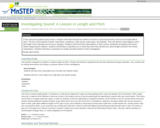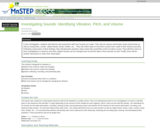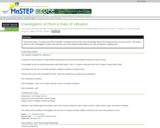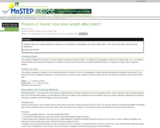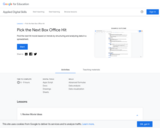
“It is past time that we tackle the plastic problem that blights our oceans. Plastic pollution is surfing onto Indonesian beaches, settling onto the ocean floor at the North Pole, and rising through the food chain onto our dinner tables.” So explains Erik Solheim, the environment director of the U.N., quoted in Danielle Smith-Llera’s book Trash Vortex. Craig Leeson, one of the narrators of the documentary A Plastic Ocean, also conveys the urgency of the situation: “The problem with that is that today only a fraction of the plastic that we produce is recycled. The rest ends up in our environment, and it's coating our land and our oceans like a disease.” Students spend the module learning about how plastic pollution became such a widespread problem, particularly in our oceans, and what can be done to reduce pollution. Students use their anchor text, the documentary, and additional articles in Units 1 and 2 to gather background knowledge about the problem, as well as explore possible solutions to reducing plastic pollution at different points in the plastic life cycle. As students transform their understanding into action plans and documentary clips to share with their communities, they help make into reality the final part of Erik Solheim’s quote: “We’ve stood by too long as the problem has gotten worse. It must stop.”
In Unit 1, students are introduced to the topic of plastic pollution and how it affects humans, animals, and the environment. Students study the documentary A Plastic Ocean, noting the transcript’s portrayal of a subject as compared to the film’s portrayal. In each lesson throughout the first half of the unit, students view a film clip as a class several times. Then they work collaboratively to complete note-catchers and engage in discussions to compare the film and transcript portrayals of subjects as well as to evaluate the speakers’ arguments. In the second half of Unit 1, students address big ideas about where and how plastic pollutes, as well as what can be done about plastic pollution. Students analyze the anchor text Trash Vortex for the author’s purpose and central ideas. Students then learn to analyze the text to discover how the author distinguishes her position from that of others. During the end of unit assessment, students read and analyze the end of Trash Vortex, answering selected and constructed response questions to analyze central ideas as well as the author’s purpose and how she distinguishes her position from others.
In Unit 2, students continue exploring the problem of plastic pollution by focusing on what can be done to address the problem. They read three articles and revisit their anchor texts to understand what interventions can be taken at each stage of the plastic life cycle: beginning, middle, and end. Students also learn about new materials being invented to replace plastic at the beginning of the life cycle, what consumers can do to use less plastic in the middle of the life cycle, and efforts by governments and organizations to stop single-use plastic and invent ways of cleaning up plastic pollution at the end of the plastic life cycle. By the middle of the unit, students take a stand about which part of the plastic life cycle would be most effective to target. They have the opportunity to defend their position in a debate with their classmates. Although this debate is not assessed, students’ preparation and participation in the debate continues to prepare them for their end of unit assessment and performance task in the following unit. In the second half of the unit, students use the evidence and reasoning they’ve collected and organized from their reading to practice on-demand argument essay writing about which point in the plastic life cycle is the best place to target to reduce pollution.
In Unit 3, students delve deeper into their chosen areas of intervention in the life cycle of plastic. Students choose a personal action to respond to the issue of plastic pollution. Actions might include using less plastic or recycling more, communicating with officials, or researching an invention. They form triads with classmates who have chosen the same category of action to determine how to coordinate their personal actions to be used in their documentary clip. In addition to this action plan work, students write their documentary film clip script over the course of the first half of the unit. In the second half of Unit 3, students work in their triads to create a storyboard, using visuals and captions to clarify their claims and emphasize the points in their documentary script. They then learn how to pitch their documentary to potential film producers, observing a model pitch and using a Tuning protocol to practice and refine their presentation skills. These include using appropriate eye contact, adequate volume, and clear pronunciation. Finally, in the end of unit assessment, students work in triads to each pitch a part of their documentary script, focusing on their use of formal English, domain-specific vocabulary, storyboard visuals, and presentation skills.
- Subject:
- English Language Arts
- Material Type:
- Module
- Unit of Study
- Provider:
- EL Education
- Date Added:
- 05/17/2024




